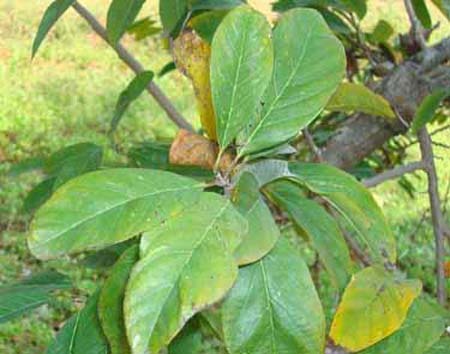Balanagar, Mammoth, Atemoya, APK-1, Arka Sahan, Dharur 6 and Roydurg
Soil –
Climate –
1.Phosphorus
|
| Deficiency Symptoms |
|
| Correction Measure |
Soil application of single super phosphate |
2.Potassium
|
| Deficiency Symptoms |
|
| Correction Measure |
Soil application of KCl@300-500g/tree. |
3.Calcium
|
| Deficiency Symptoms |
|
| Correction Measure |
Application gypsum@ 50 kg/ha |
4.Magnesium
|
| Deficiency Symptoms |
|
| Correction Measure |
Soil application of dolomite |
5.Sulphur
|
| Deficiency Symptoms |
|
| Correction Measure |
Soil application of gypsum@2-5kg/tree/year |
6.Boron

Symptoms-
Management-
7.Iron
|
| Deficiency Symptoms |
|
| Correction Measure |
Soil application of FeSO4@0.5 kg /tree |
8.Zinc
|
| Deficiency Symptoms |
Interveinal chlorosis; shortened internodes; epinastic curvature of leaves |
| Correction Measure |
Soil application of ZnSO4@ 20kg/tree/year or foliar spray of ZnSO4@0.5% |
1.Fruit borer: Heterographis bengalella
Symptoms of damage
Management
|
2.Fruit fly: Bactrocera zonata

Symptoms of damage
Management:
|
3.Tailed mealy bug: Ferrisa virgata

Symptoms of damage:
|
Management:
Irrigate once in 7-8 days
Weeding as and when required to keep field clean
After 4-5 years of planting.
Average yield of 80-100 fruits/tree/year
